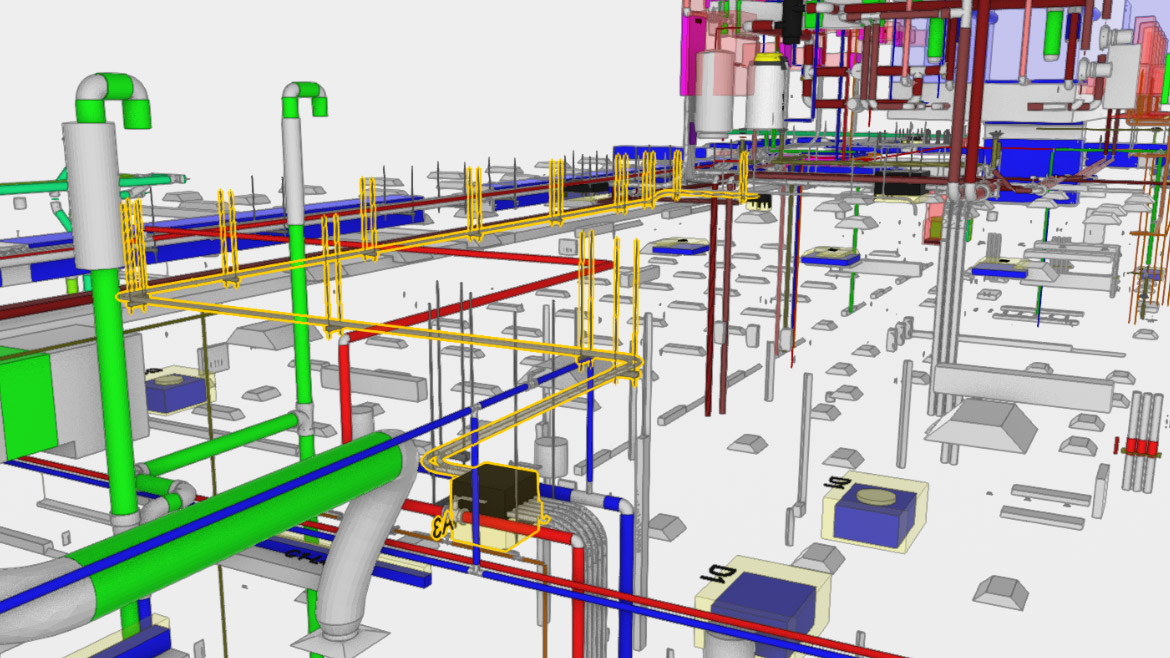Achieving high-performance HVAC systems is, in my view, an “art” (i.e., the human skill of creativity, imagination, and practicality) that begins with a high-performance design initiative. Putting aside the energy-efficient aspects of system design, here are a practitioner’s steps that address value engineering and serviceability, providing system efficiency throughout the useful service life of the system.
Efficiency should start with quality control. For me, this means having a time-tested Sheet Metal Design Checklist with categories that include:
- Standardization
- Minimize the number of transitions from one duct size to another (ask a sheet metal contractor how much sheet metal ends up on the shop floor as waste during the fabrication phase).
- Minimize the number of terminal unit sizes. Ask a maintenance manager how many different-sized components need to be available in inventory.
- Identify and use only the optimum duct fittings. Review ASHRAE 2021 Handbook, Chapter 21, Duct Design. Note: ASHRAE 2025 Handbook will be available for purchase June 2025.
- Accessibility
- Locate ceiling devices (e.g., dampers, etc.) out of the way of occupants. Use the reflected ceiling plan and the furniture layout drawings to determine optimum access to these devices, avoiding occupant/worker disruption during routine maintenance and troubleshooting. For example, locate air terminals in corridors.
- Show on the sheet metal fabrication drawing the equipment access panel door “swings” and fan shaft, coil, and filter “removal space allowance.” Highlight access areas by cross-hatching the drawing to indicate where a maintenance person can stand next to equipment to work on components without squeezing between pipes, conduit, etc.
- Consider the eventual equipment removal path when equipment reaches its end-of-useful service life.
- Connection Efficiency
- Review AMCA standard guidelines (AMCA publication 201) for duct connections to fans. Know the approximate static pressure drop associated with a poor fan inlet connection.
- Review this same publication for duct discharge from fans. Know the approximate static pressure drop from a poor fan outlet connection.
- Remember that once a fitting is installed, the fan energy waste is set for the life of the duct system. For example, compare a standard sheet metal tee versus a 45° tee entry branch performance.
- Dampers & Louvers
- Don’t assume the air-handling unit manufacturer or the automatic control contractor will size the dampers. Make sure two-position and modulating dampers are sized to maintain controllability and not just to fit the duct or air-handling unit width and height.
- Understand that snow and rain can pass through an outdoor air louver, regardless of the louver intake velocity. Prevailing winds can blow snow and rain in, so figure out how to minimize this building operator’s problem (e.g., wet air filter).
- With a marker, document next to each damper its “normally open” or “normally closed” design intent when the air-handling unit is off.
I have listed suggestions for each category above, but there is far more to designing a duct system that will be cost-efficient to install, operate, and maintain than these twelve suggestions. Create a Sheet Metal Design Checklist to standardize how your company maintains quality control when designing and/or fabricating the air distribution system.
For naysayers who claim suggestions like mine are for design engineers working in a perfect world, I suggest the sheet metal contractor take the initiative to consider the facility personnel responsible for operating and maintaining these engineered systems. Too often, the design engineer doesn’t invest the time needed to learn from past project experience because they are off to the next HVAC project. Another flaw in the engineer’s design process is allowing the HVAC equipment sales engineer to provide portions of the design that go beyond equipment selection, such as CAD drawings of the unit that can simply be inserted onto the engineer’s drawings.
Sure, in a perfect world, every HVAC design would have high-performance results, but we aren’t striving for perfection—just the optimum initiative to achieve sustainable success, rather than designing a duct system that may create operational problems for the rest of the system’s life.
Note: AMCA (Air Movement and Control Association International)
Whether you require installation, repair, or maintenance, our technicians will assist you with top-quality service at any time of the day or night. Take comfort in knowing your indoor air quality is the best it can be with MOE heating & cooling services Ontario's solution for heating, air conditioning, and ventilation that’s cooler than the rest.
Contact us to schedule a visit. Our qualified team of technicians, are always ready to help you and guide you for heating and cooling issues. Weather you want to replace an old furnace or install a brand new air conditioner, we are here to help you. Our main office is at Kitchener but we can service most of Ontario's cities
Source link



